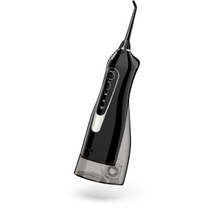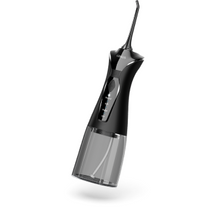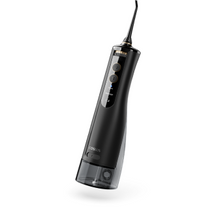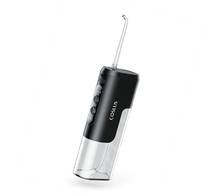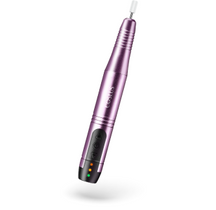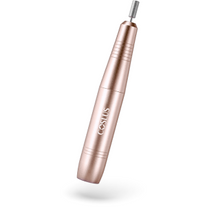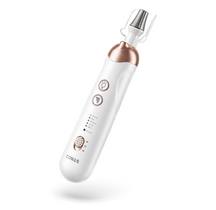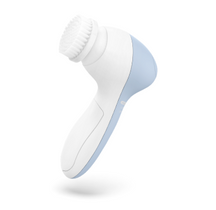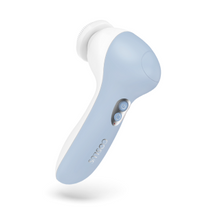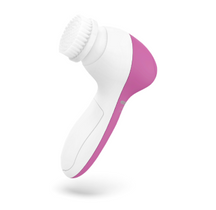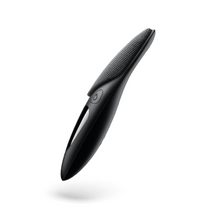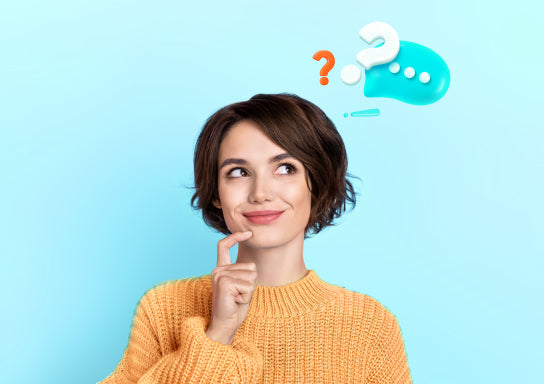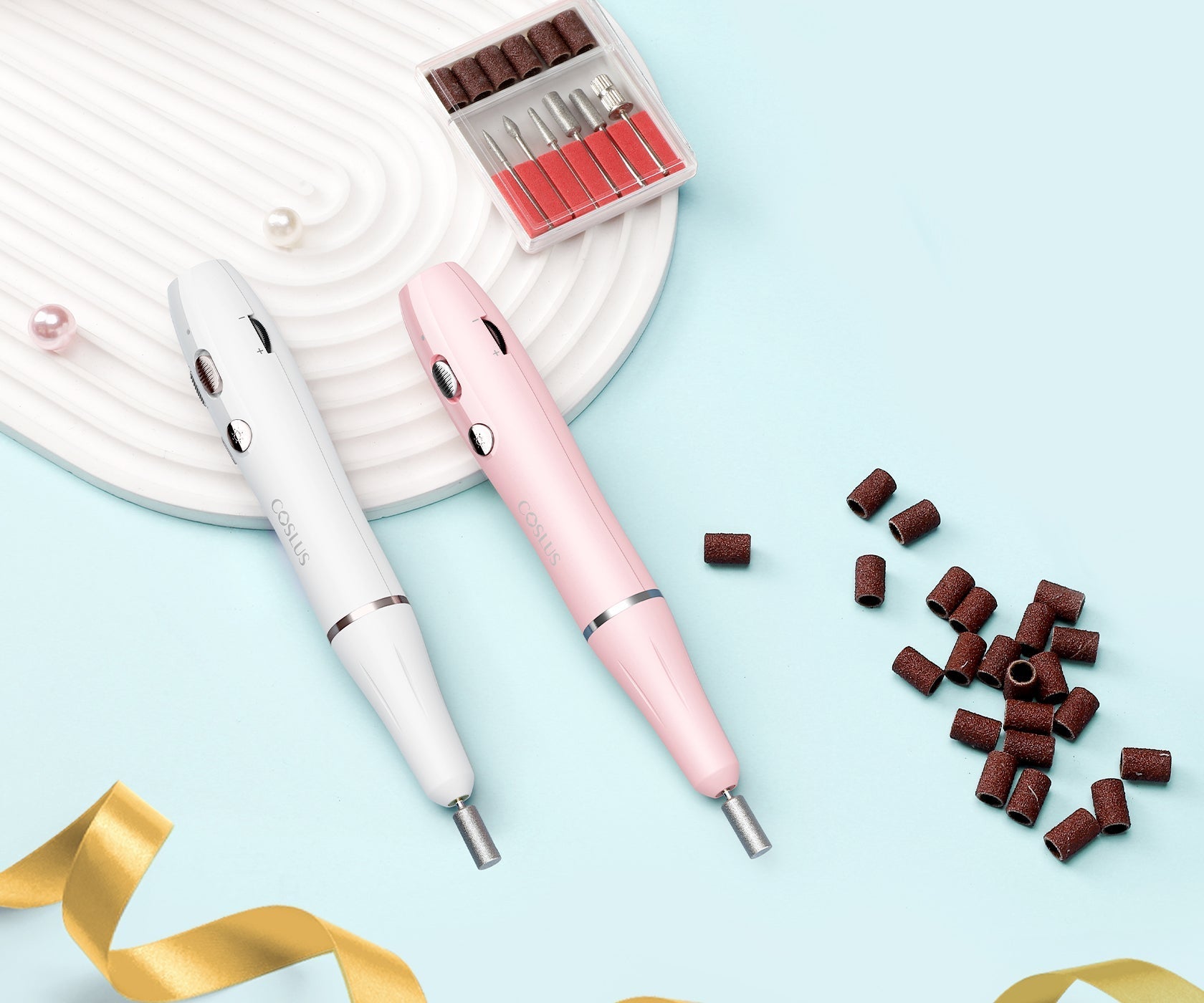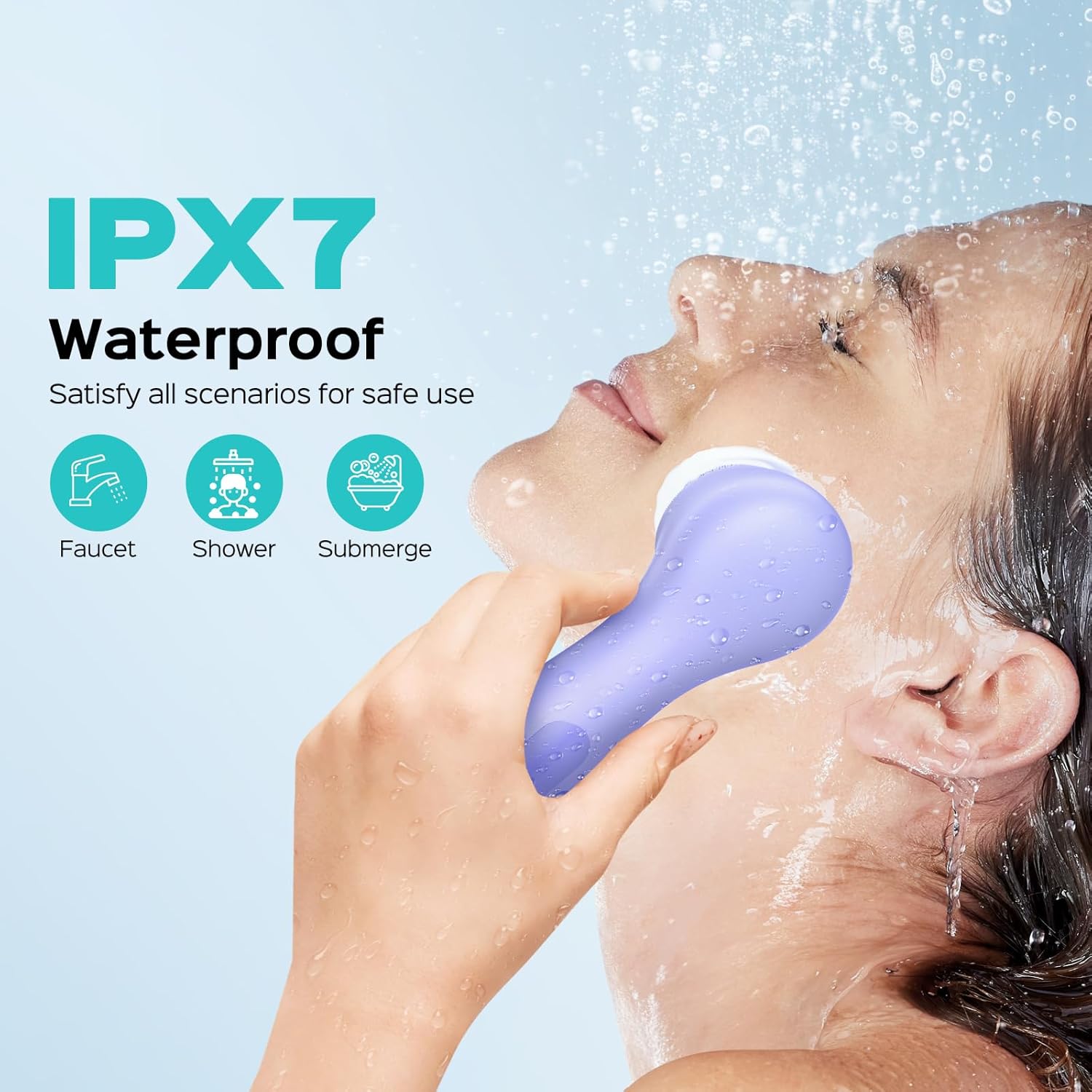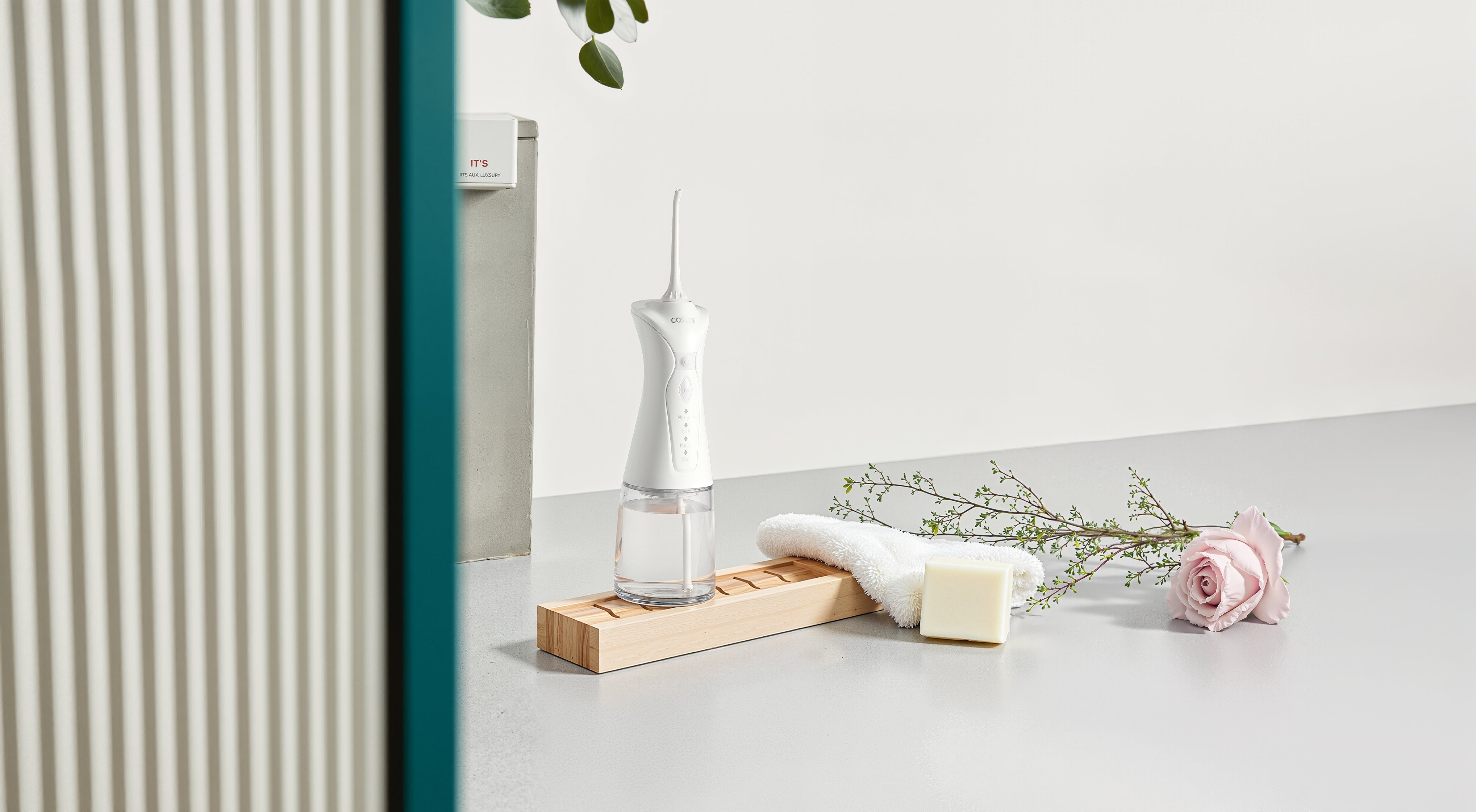
How to Use an Electric Toothbrush for a Superior Clean
When was the last time you thought about how you brush your teeth? It's something most of us do on autopilot, but your brushing technique has a huge impact on your dental health. Electric toothbrushes have become a game-changer for many people, offering better cleaning power with less effort than traditional manual brushes. They're not just for people with dental problems—they're for anyone who wants healthier teeth and gums with less work. This straightforward guide will show you how to use an electric toothbrush properly, maintain it, and address common concerns. Follow these simple tips, and you'll be on your way to a cleaner, healthier smile.
Why Should You Switch to an Electric Toothbrush?
Electric toothbrushes are cleaner than manual ones with less effort on your part. They take thousands of strokes per minute and get into the places that an ordinary toothbrush tends to miss.
- Electric Toothbrushes Clean Better: The fast, regular strokes clean each tooth extensively, particularly between teeth and in hard-to-reach areas around the gumline where plaque accumulates. This prevents cavities and keeps your mouth healthier.
- Gentler on Your Gums: Most electric toothbrushes include pressure sensors that warn you when you're brushing too hard, protecting your gums and tooth enamel from wear. This helps you develop healthier brushing habits.
- Smart Features That Are Helpful: Today's electric toothbrushes have timers to make sure you brush for the full two minutes, reminders to move to other parts of your mouth, and various modes for sensitive teeth, gum care, or whitening.
Electric toothbrushes provide intensive cleaning every time, whether you're tired or in a hurry. They come in handy, especially for individuals who have hand disabilities like arthritis or anyone who just can't quite master the correct brushing technique.
Getting Started: Your Pre-Brushing Checklist
Before you start using your new electric toothbrush, there are a few simple steps to take that will help you get the most out of it.
Make Sure It's Fully Charged
When you first get your electric toothbrush, place it on the charging base for the recommended time before using it. Most models need 12-24 hours for a complete first charge, even if the battery indicator shows it's ready sooner. This helps condition the battery and provides maximum power for your first brushing session. After the first charge, regular charging between uses will keep your toothbrush ready whenever you need it. Many models can last 1-2 weeks on a single charge, but it's a good habit to return the brush to its charger after each use.
Take Time to Read the Instructions
Every electric toothbrush model is a bit different, so spend a few minutes looking through the instruction manual. Pay special attention to:
- How the power button and settings work
- What the different cleaning modes do
- What the lights or indicators mean
- How long to charge the brush
- How to properly clean and maintain your toothbrush
Pick the Right Brush Head
Electric toothbrushes usually come with different brush head options, each designed for specific needs:
- Standard/Regular heads: Good for everyday cleaning
- Sensitive heads: Softer bristles for sensitive teeth and gums
- Whitening heads: Often have special rubber cups or polishing bristles
- Gum care heads: Extra-soft bristles that focus on the gumline
- Deep clean heads: More bristles for a thorough cleaning
Choose a brush head that matches your main concern. The DY-108 Pro Electric Toothbrush Heads offer excellent standard cleaning performance for daily oral care. If you're not sure, start with the standard head that came with your toothbrush and ask your dentist for recommendations at your next visit.
How to Brush Your Teeth Correctly with an Electric Toothbrush: 6 Steps to a Perfect Clean
Using an electric toothbrush is different from using a manual one. Follow these simple steps to get the best cleaning possible and protect your teeth and gums.
Step 1: Apply Toothpaste
First, wet the brush head slightly—just enough to dampen it. Then apply a pea-sized amount of fluoride toothpaste to the brush head. This small amount is all you need because electric toothbrushes create foam and distribute the paste much better than manual brushes. Using too much toothpaste just creates excessive foam and might make you want to spit before you've finished brushing properly.
Step 2: Correct Positioning
Place the brush head against your teeth at a 45-degree angle toward your gum line. This position is crucial because it allows the bristles to clean both your teeth and the area where your gums meet your teeth—a spot where plaque loves to hide. Make sure the bristles gently touch both your teeth and gums.
Step 3: Power On and Gentle Guidance
Once the brush is in position in your mouth, turn it on. If you have a sonic toothbrush, keep your lips mostly closed to prevent splatter. Let the toothbrush do the work—this is the biggest difference from manual brushing! You don't need to scrub or press hard. In fact, using too much pressure can damage your gums and wear down tooth enamel. Simply hold the brush lightly and guide it slowly from tooth to tooth, spending about 2-3 seconds on each one. The electric motion is doing all the cleaning work for you.
Step 4: Systematic Coverage (The Quadrant Method)
To make sure you clean your entire mouth thoroughly, divide it into four sections (quadrants):
- Upper right
- Upper left
- Lower right
- Lower left
Many electric toothbrushes have a feature called a "quad pacer" that buzzes or pauses briefly every 30 seconds to remind you to move to the next section.
For each quadrant, brush:
- The outer surfaces (the sides facing your cheeks and lips)
- The inner surfaces (the sides facing your tongue)
- The chewing surfaces of your molars
Start at the back of one quadrant and work your way forward, then move to the next quadrant. This systematic approach helps ensure you don't miss any areas.
Step 5: Brushing Duration
Brush for a full two minutes—the time dentists recommend for thorough cleaning. Most electric toothbrushes have a built-in timer that will alert you when two minutes have passed. If yours doesn't have this feature, set a timer on your phone. Two minutes might feel longer than you expect when you're brushing properly! Following professional brushing recommendations is one of the dental care essentials that significantly impacts long-term oral health.
Step 6: Finishing Up
After brushing your teeth, gently brush your tongue to remove bacteria that can cause bad breath. Not all electric toothbrush heads are designed for tongue cleaning, so check if yours is suitable or consider using a separate tongue scraper.
Turn off your toothbrush before removing it from your mouth. Rinse your mouth thoroughly with water, and then rinse the brush head under running water to remove any remaining toothpaste and debris. Shake off excess water and stand your toothbrush upright (if possible) to let it air dry completely between uses.
Electric toothbrushes are designed to clean better with less effort from you—so relax, be gentle, and let the technology do its job!
6 Tips That Make Your Electric Toothbrush Work Better
Once you've mastered the basics of using your electric toothbrush, these professional tips will help you take your oral care routine to the next level. These techniques maximize cleaning effectiveness while protecting your teeth and gums.
1. Don't press too hard
The most important thing to remember with electric toothbrushes is that less pressure is more effective. Let the bristles barely touch your teeth and gums—the toothbrush's technology provides all the cleaning power you need. Pressing harder doesn't clean better; it actually reduces effectiveness by limiting the brush head's ability to oscillate or vibrate properly.
Many premium models feature pressure sensors that light up, vibrate, or reduce power when you press too hard. Pay attention to these signals and adjust accordingly. If your brush doesn't have this feature, practice holding it with just enough pressure that you feel the bristles against your teeth but not enough to bend them significantly.
2. Hold it lightly like a pencil
How you hold your toothbrush makes a significant difference. Dentists recommend holding your electric toothbrush with a light, pencil-like grip between your thumb and fingers—not in a closed fist. This "pencil grip" naturally reduces the pressure you apply and gives you better control for precise positioning.
This lighter grip also helps prevent the common tendency to scrub, which can damage enamel and gums. When held properly, your brush should feel like an extension of your hand, allowing for gentle, controlled movements around your mouth.
3. Brush one quadrant of your mouth at a time
Divide your mouth into four sections (upper right, upper left, lower right, lower left) and focus on one section before moving to the next. Within each section, position the brush head to cover one tooth and part of the gum line, hold for 2-3 seconds, then move to the next tooth. This methodical approach ensures thorough cleaning throughout your mouth.
4. Use the right mode for your needs
Modern electric toothbrushes often come with multiple cleaning modes designed for specific needs. Take advantage of these features:
- Clean (For daily cleansing)
- Comfort
- White (Deep Cleaning)
- Gum care (For orthodontics and during dental treatment)
- Sensitive (For beginners & sensitive teeth)
Start with the gentlest setting if you're new to electric toothbrushes, then gradually experiment with other modes as you become comfortable.
5. Angle the brush where teeth meet gums
The area where your gums intersect your teeth is critical to oral health, but often neglected. Position your brush at a 45-degree angle against your gum line to brush this intersection effectively. This angle positions the bristles below the gum line to sweep out plaque deposits in the sulcus (the small crevice between your gum and tooth).
Take special care in the gum line areas, especially on the teeth in the back of your mouth that are harder to reach. Proper cleaning there can go a long way toward keeping your risk for gingivitis and gum disease at a minimum.
6. Follow the same path each time you brush
Create a routine brushing pattern to cover all areas. Most dental experts suggest beginning with the outside of your back teeth on one side, moving around to the other side, then repeating for the inside, and lastly, cleaning all chewing surfaces. This methodical approach avoids missed spots.
No matter what pattern you choose, maintain consistency in order to build muscle memory so you'll brush your entire mouth every time by default.
If you are coming from a manual toothbrush, give two weeks to acclimate to the electric feel. The strong vibrations and the automatic brushing will be awkward at first, but your mouth will acclimate. Use lower intensities if your brush has levels, and progress in intensity as you acclimate to the brush.
8 Common Mistakes to Avoid When Using an Electric Toothbrush
Even with the best electric toothbrush, your oral health routine can fall short if you're making some common mistakes. Here are the main pitfalls to avoid:
1. Applying too much pressure
One of the biggest mistakes people make is brushing too hard. Unlike manual brushes, electric toothbrushes require almost no pressure to be effective. The bristles just need to touch your teeth while the motor does the work. Pressing too hard can:
- Wear down your tooth enamel
- Cause gum recession
- Damage the sensitive tissue around your teeth
- Reduce the effectiveness of the brush's motion
Many modern electric toothbrushes include pressure sensors that flash, buzz, or reduce power when you press too hard—pay attention to these signals!
2. Using manual brushing techniques
Electric toothbrushes work differently from manual ones. Avoid:
- Scrubbing back and forth vigorously
- Making your own circular motions
- Moving the brush too quickly across teeth
Instead, hold the brush gently against each tooth for a few seconds and let the technology do its job. The brush is designed to create thousands of movements per minute that you simply can't replicate with manual techniques.
3. Rushing through your brushing
Skimping on brushing time is another frequent error. The professionally recommended minimum is two minutes—30 seconds per quadrant of your mouth. Most people brush for just 45-60 seconds, which is not sufficient time to effectively remove plaque. Utilize your toothbrush's built-in timer or set one on your phone if necessary.
4. Brushing randomly
Racing around your mouth without a plan will leave you with empty areas. The quadrant method (dividing your mouth into four quadrants) ensures complete coverage. Be aware of those 30-second signals your brush provides you, and double-check that you're providing each quadrant with a good cleaning before moving on to the next one.
5. Keeping brush heads too Long
Worn-out brush heads significantly reduce cleaning effectiveness. Replace your brush head:
- Every 3 months as a general rule
- Sooner if the bristles become frayed or discolored
- After you've been sick
- According to your specific manufacturer's recommendations
Some brush heads have colored indicator bristles that fade when it's time for replacement—don't ignore these signals!
6. Neglecting brush head cleaning
After brushing, many people simply give the brush head a quick rinse. However, thoroughly cleaning your brush head is essential to prevent bacteria buildup. After each use:
- Rinse the brush head completely under running water
- Shake off excess water
- Store upright to allow air drying
- Weekly, you can soak the head in antibacterial mouthwash for a deeper clean
7. Forgetting to wet the bristles first
A minor but helpful tip: slightly wetting the bristles before applying toothpaste helps with even distribution of the paste across your teeth. Dry bristles can cause the toothpaste to stick in one spot or fall off entirely.
8. Turning on the brush outside your mouth
Especially with powerful sonic toothbrushes, turning them on before they're positioned in your mouth will send toothpaste flying everywhere! Always place the brush against your teeth first, then power it on. This simple habit keeps your bathroom cleaner and ensures all the toothpaste stays where it belongs—on your teeth.
5 Tips to Keep Your Electric Toothbrush Clean and Working Well
1. Rinse your toothbrush after every use
After brushing, rinse both the brush head and handle under warm water. Make sure water flows through all the bristles to remove toothpaste and food particles. Clean where the brush head connects to the handle, as this area often traps moisture. Shake off excess water and wipe the handle with a dry cloth.
2. Store your toothbrush in a clean, dry place
- Keep your toothbrush standing upright so water drains away
- Store in an open, airy space (not in closed containers)
- Keep at least 3 feet from the toilet
- Don't let brush heads touch each other
- Only use travel cases when actually traveling
3. Clean all parts of your toothbrush once a week
For the brush head:
- Soak in mouthwash or a mix of hydrogen peroxide and water for 5-10 minutes
- For buildup, clean with baking soda paste
- Rinse thoroughly afterward
For the handle:
- Wipe with rubbing alcohol or mild soap
- Clean crevices and buttons with a cotton swab
- Clean the metal shaft where the head attaches
For the charging base:
- Unplug before cleaning
- Wipe with a damp cloth
- Dry completely before plugging back in
4. Get a new brush head every 3 to 4 months
- Replace every 3 to 4 months
- Replace sooner if bristles look frayed or discolored
- Always replace after being sick
- Set reminders or use subscription services to remember
5. Take care of the battery to make it last longer
- Let the battery fully drain once a month
- Don't leave on the charger all the time
- If storing long-term, charge to 50%
Taking care of your electric toothbrush doesn't require much time, but makes a big difference in how well it works and how long it lasts. A clean, well-maintained toothbrush not only saves you money in the long run but also ensures you're getting the best possible clean for your teeth every day.
How Often Should I Charge My Electric Toothbrush?
Charging frequency depends on your specific model and usage patterns:
- For standard rechargeable models: Most newer electric toothbrushes will run for 1-2 weeks on a single charge with normal twice-daily use. Allow the battery to completely drain before recharging every month or so to maintain the best battery performance and lifespan.
- For lithium-ion battery models: These newer brushes tend to hold a charge for 2-4 weeks and do not require being fully depleted of power before being recharged. Do not keep them on the charger constantly, however, as this will reduce battery life over time.
- For traveling: Fully charge your toothbrush prior to traveling, particularly if your model lacks USB charging. Most high-end models come with travel cases that have charging functionality built in for longer trips.
Battery status lights on most devices will blink or glow in a second color when power is low, giving ample warning to recharge before next use.
Can I Use Any Brand of Toothpaste With My Electric Toothbrush?
Yes, you may use any ADA-approved toothpaste with your electric toothbrush. Nevertheless, several things can make your experience improve:
- Steer clear of whitening toothpastes that are very abrasive: With the enhanced cleaning power of an electric toothbrush, these may strip away enamel gradually. If whitening is your aim, switch to a less abrasive toothpaste and the whitening mode on your brush instead.
- Consider the texture of toothpaste: Gel toothpastes may be less likely to splatter than thicker, paste types when used in conjunction with high-powered sonic instruments.
- Use the correct amount: Use a pea-sized amount of toothpaste—too much toothpaste used produces too much foam that obstructs vision and good technique during brushing.
There are a few manufacturers that offer toothpastes specifically made to accompany their electric toothbrushes, but these are promotional partnerships and not technical requirements.
Are Electric Toothbrushes Safe For Sensitive Teeth, Braces, Or Dental Work?
Electric toothbrushes are generally safe and often recommended for people with dental sensitivities or appliances, with some specific considerations:
- For Sensitive Teeth: Electric toothbrushes are gentle on sensitive teeth. Choose one with a "sensitive" mode that vibrates less aggressively. Start on the lowest setting and use soft-bristled brush heads used for sensitive teeth.
- For Braces: Electric toothbrushes are wonderful for braces and often do a better job than manual brushes. Look for special orthodontic brush heads that are designed to get around brackets and wires. Don't press too hard and harm your braces.
- For Crowns, Veneers, and Implants: New dentistry can fit electric toothbrushes. They're actually great for brushing around implants and bridges where food accumulates. Just be careful with the pressure, especially around implants.
- Following Dental Surgery: Don't brush with an electric toothbrush on operated areas until your dentist advises you to. Usually, you'll need to wait until fully healed.
Electric toothbrushes are often prescribed by dentists to patients with dental work because they clean more effectively with less opportunity for damage from incorrect brushing.
Make Your Electric Toothbrush Work Best for You
Electric toothbrushes can transform your oral health when you use them correctly. Getting comfortable with your electric toothbrush is straightforward, and the benefits are clear: cleaner teeth with less work than a manual brush. Ready to improve your routine? Start tonight by using the right technique, check if your brush head needs replacing, and ask your dentist for personalized advice at your next visit. These small daily changes will make a real difference to your dental health over time!
Table of Contents
- Why Should You Switch to an Electric Toothbrush?
- Getting Started: Your Pre-Brushing Checklist
- How to Brush Your Teeth Correctly with an Electric Toothbrush: 6 Steps to a Perfect Clean
- 6 Tips That Make Your Electric Toothbrush Work Better
- 8 Common Mistakes to Avoid When Using an Electric Toothbrush
- 5 Tips to Keep Your Electric Toothbrush Clean and Working Well
- How Often Should I Charge My Electric Toothbrush?
- Can I Use Any Brand of Toothpaste With My Electric Toothbrush?
- Are Electric Toothbrushes Safe For Sensitive Teeth, Braces, Or Dental Work?
- Make Your Electric Toothbrush Work Best for You
Table of Contents
- Why Should You Switch to an Electric Toothbrush?
- Getting Started: Your Pre-Brushing Checklist
- How to Brush Your Teeth Correctly with an Electric Toothbrush: 6 Steps to a Perfect Clean
- 6 Tips That Make Your Electric Toothbrush Work Better
- 8 Common Mistakes to Avoid When Using an Electric Toothbrush
- 5 Tips to Keep Your Electric Toothbrush Clean and Working Well
- How Often Should I Charge My Electric Toothbrush?
- Can I Use Any Brand of Toothpaste With My Electric Toothbrush?
- Are Electric Toothbrushes Safe For Sensitive Teeth, Braces, Or Dental Work?
- Make Your Electric Toothbrush Work Best for You


